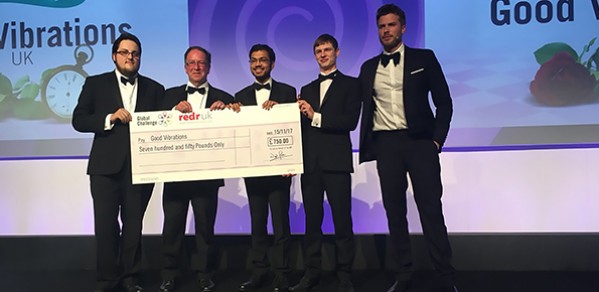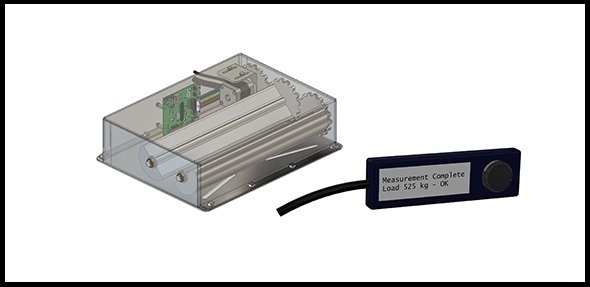
Three Cambridge students have won a cash prize in recognition of their engineering solution to a problem often faced by humanitarian relief agencies tackling challenging terrain.
This competition is all about giving young engineers a platform to highlight their innovations. By shining a light on a particular problem we’ve found that engineers think outside of the box and come up with innovative solutions.
Nick Winser, IET President
Fourth year undergraduates Siddharth Gupta, Gwilym Rowbottom and Joshua de Gromoboy entered the Institution of Engineering and Technology’s (IET) Young Professionals Global Challenge with their invention ‘Weigh2Go’ – an on-board device that can gauge a vehicle’s weight to ensure it is loaded correctly and safely.
The team’s device takes a unique approach to the problem being faced by humanitarian relief agencies by analysing the vibrational response of the car to a known input force – a principle not currently undertaken by any commercially available solution.
The trio from Pembroke College, who formed the ‘Good Vibrations’ team, were announced the winners of the global engineering challenge. They each received a prize of £250 and were presented with their trophy and a certificate at the IET Innovation Awards earlier this month.
Young professional engineers (aged 18-35) from across the globe were challenged to develop a device that can accurately and actively gauge the load weight in a Toyota Land Cruiser or similar, enabling the driver to visually identify when the vehicle is safely loaded and alert the driver if the vehicle is overloaded.
The competition scenario was developed in partnership with international NGO, RedR.

The vibration unit comprises of two offset masses in a steel case which are mounted to the car chassis. By rotating the masses, the car is forced to vibrate and the response is recorded using the on-board accelerometer. The user operates the device from a display unit mounted on the dashboard.
Siddharth said: “We are pleased to say that we won this year's challenge, having won it for the second time in a row (we previously won in 2015).
“We researched existing solutions available on the market and after considering the advantages and disadvantages of each one in the context of the brief, decided on a vibration-based approach.
“One of the key disadvantages to any commercial solution was the need for regular recalibration by the manufacturer. We were keen to avoid this as it would be impractical in a humanitarian aid context and felt our solution needed to be easy to install and repair.”
Martin McCann, RedR UK Chief Executive, said: “NGOs often work off-road in challenging terrain and are reliant on vehicle fleets for day-to-day operations. The consequences of overloaded vehicles include higher fuel consumption, serious risk of damage to the vehicle, and increased danger of crash incidents. This can leave vehicles unavailable for weeks at a time, causing implications for the provision of relief services and for the safety of agency staff.
“RedR is pleased to be working with the IET in the Global Challenge and we are impressed with the quality of the projects submitted for the competition. In particular, my congratulations go to the ‘Good Vibrations’ team who designed the winning project.”
Nick Winser, IET President, added: “This competition is all about giving young engineers a platform to highlight their innovations. By shining a light on a particular problem we’ve found that engineers think outside of the box and come up with innovative solutions.
“Previous winners of this challenge have gone on to see their innovations becoming reality, so this is a great way to make a difference and solve a real world challenge.”

